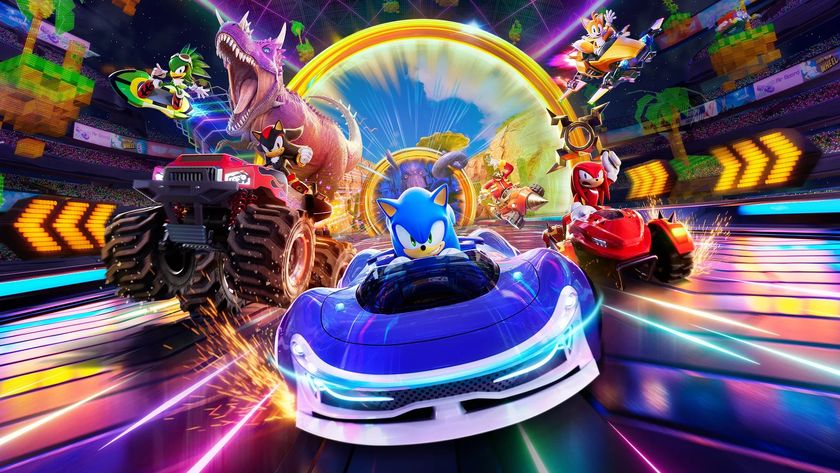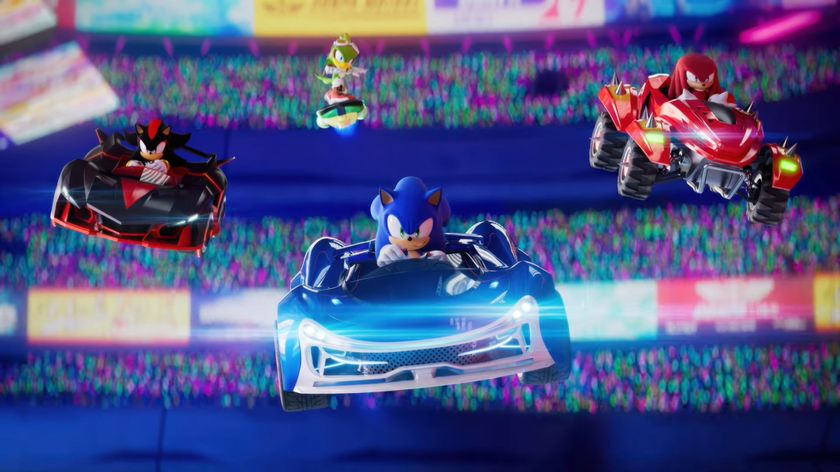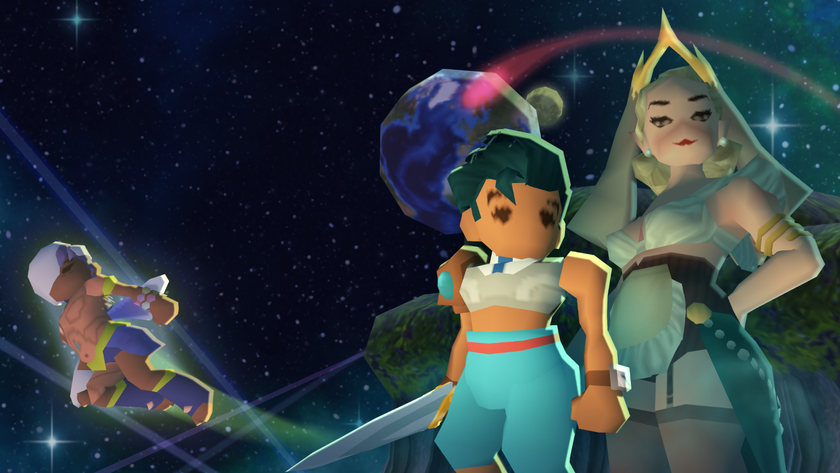The rise, fall and deafening crash of Sonic the Hedgehog
A teary-eyed examination of gaming's greatest casualty
From a business standpoint, there's nothing wrong with what Sega did next. It had a viable mascot that sold boatloads of product. Makes sense then to put as many games out with Sonic on them as possible, regardless of how well they stick to the established roots. Problem is, in the course of trying to secure another hit, all Sega did was produce a string of fair to poor half-games that spread the series out instead of moving it ahead.
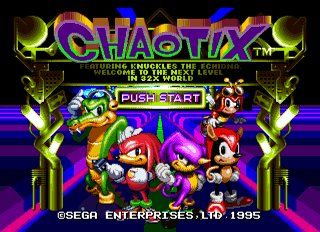
Knuckles Chaotix: This got a lot of hate from the mid '90s gaming press, but our time with it is fondly remembered. Sure the rubber-band gameplay was irritating (you were constantly tethered to another character), but hey, at least it was a new idea. However, Chaotix diluted the Sonic-verse by introducing tons of shitty characters. Vector the Crocodile! Espio the Chameleon! And best of all, Charmy Bee!
For whatever reason, some people actually adore these idiotic "Something the Something" designs and have writtenenormousamounts of text about them. Wow.
Sadly, this was just the beginning. Subsequent Sonic games would add even more horrible characters, each more pointless and gratuitous than the last. Chaotix is a perfectly good game forever tainted by the franchise-crushing precedent it set.
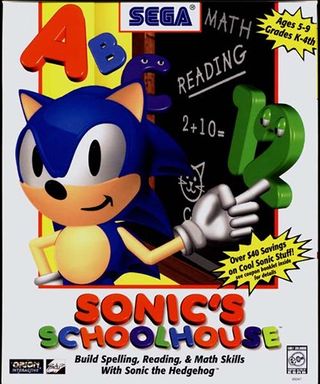
Sonic's Schoolhouse: Well, it was inevitable, what with Mario teaching typing and all. They could have at least built a better Sonic model, right? And someone cheer up that 12!
Sonic the Fighters: After blasting through levels like a bolt of greasy fast white lightning in the Genesis games, we never once thought "Wow, this would make a great fighting game." Someone at Sega sure did, and from that money-grubbing concept came a 3D fighter with weird cartoony effects. You could smash or slap opponents like a pancake, making the whole thing feel more Looney Tunes than Sonic. Fine for its day, but no one asked for a Sonic fighting game.

Sonic R: Sonic on a race track. Couldn't have been a more obvious route to take. Fans ate it up, but most of the press responses were negative (again). GamesRadar wasn't around in 1997 to pass judgment, but we certainly played it back then, and the office opinion is split. Some think it's one of Saturn's best, others couldn't stand the controls, crappy multiplayer and grating vocal performances.
Sign up to the 12DOVE Newsletter
Weekly digests, tales from the communities you love, and more
Sonic Jam: Yes, there was a touch screen handheld before the DS. Yes, it was one of the worst things that has ever existed. No, we do not have any fuzzy memories for this slow-as-molasses "Sonic" game that made us question why we ever liked the series in the first place. Not to be confused with Saturn's Sonic Jam, an equally pointless release that collected the four 16-bit platformers and one meandering 3D "Sonic World" devoid of purpose.
Here's what to take away from all this: instead of creating a 3D Sonic game, or even a new 2D one, Sega continued to dump so-so titles on its various platforms - Genesis, Saturn, Game Gear and 32X. All four did co-exist for a brief time (right after Sega CD died), and even with four machines Sega didn't produce a true successor to Sonic & Knuckles. Just a lot of riffraff that sold to diehard fans.
But it's not like they didn't try to push Sonic into the third dimension...
Sonic X-treme: A tragically canceled project that could have been the Saturn's saving grace. Looks a bit Mario Galaxy, doesn't it -all those spinny globes and vertigo-inducing visuals? If this had released on time (or at all) we might have seen a Super Mario 64-like surge in Sonic and Saturn interest. Alas, that didn't happen, and X-Treme made way for 1999's Sonic Adventure and, judging by some of the gameplay up there, Sonic and the Secret Rings. The one game that should have come out, didn't. Brilliant. Gold stars for everyone.

Game Gear: The battery-devouring Game Gear enjoyed Sonic's early popularity as much as the Genesis. Ports of Sonic 1 and 2, though drastically changed from the 16-bit game, still delivered the same excitement. Then came the "me too" entries like Tails Sky Patrol, Tails Adventures, Triple Trouble, Drift 2 and "meh" ports of Spinball and 3D Blast. Lucky Neo Geo Pocket Color owners happily plowed through Sonic Pocket Adventure, but it was in such short supply that all of its positive traits were lost in a sea of mediocrity.
Quantity, not quality, defined Sonic in the late '90s, and the coming of Dreamcast would prove Sega learned no lessons at all.
A fomer Executive Editor at GamesRadar, Brett also contributed content to many other Future gaming publications including Nintendo Power, PC Gamer and Official Xbox Magazine. Brett has worked at Capcom in several senior roles, is an experienced podcaster, and now works as a Senior Manager of Content Communications at PlayStation SIE.
Most Popular



